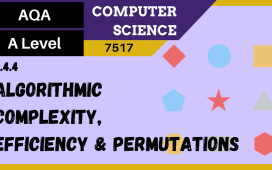Imagine standing in a bustling marketplace filled with thousands of voices, each shouting something different. You’re trying to understand the overall sentiment are people excited, anxious, or calm? Listening to every single voice is impossible. Instead, you start focusing on the loudest and most distinct patterns. This act of tuning into the dominant voices while filtering the rest is what Principal Component Analysis (PCA) does for data. It’s a mathematical ear, trained to listen only to the melodies that matter.
The Curse of Too Much Information
In the digital world, data is everywhere customer behaviour, sensor readings, financial transactions, and more. Each dataset has countless variables, often overlapping or irrelevant. The challenge isn’t the lack of information, but the abundance of it.
Think of a painter faced with hundreds of shades of blue. Using all of them would make the canvas chaotic. Instead, the painter picks the few that define the essence of the ocean or sky. PCA follows the same principle it reduces complexity by distilling the most meaningful patterns out of a sea of variables.
For professionals pursuing an Artificial Intelligence course in Delhi, mastering PCA is essential. It’s the bridge between overwhelming data and meaningful insight, allowing algorithms to focus on what truly drives prediction and understanding.
Seeing the World Through Fewer Dimensions
At its core, PCA is like a camera lens that zooms out to capture a clearer picture. Instead of focusing on every fine detail, it steps back to show the big picture without losing the essential patterns. It works by finding new “axes” (called principal components) that summarise the data’s variance the way values differ from each other.
These new axes aren’t chosen at random; they are mathematically determined to capture as much of the data’s variability as possible. Imagine rotating a complex sculpture under the light until you find the perfect angle that shows its proper form. That rotation is what PCA performs reorienting data to reveal its underlying structure.
This transformation doesn’t just make data simpler; it makes it interpretable. Analysts can visualise complex datasets in two or three dimensions and still understand most of what’s going on. In essence, PCA helps you see the forest and the trees just from a smarter angle.
Variance: The Pulse of Data
Variance is the heartbeat of PCA. It measures how spread out the data is how different each point is from the average. PCA identifies directions in which this spread is largest because those are the directions that carry the most information.
Picture a school playground full of children running in different directions. If most of them are running north-south, that’s where the main activity lies. PCA mathematically finds this dominant direction the axis where the energy (variance) is strongest and defines it as the first principal component.
The process continues for other directions that capture the remaining energy, all while ensuring these new directions don’t overlap in information. It’s like building a new set of lenses, each focusing on a unique aspect of the dataset’s behaviour.
Understanding this concept allows learners from an Artificial Intelligence course in Delhi to design efficient models that operate on compact, noise-free data. By doing so, they reduce computation time while increasing interpretability critical traits in AI pipelines dealing with high-dimensional inputs.
From Raw Data to Principal Components
PCA follows a structured yet elegant process. First, it standardises data scaling all variables to ensure one doesn’t dominate simply because of its larger range. Then, it computes the covariance matrix, which expresses how variables move in relation to one another.
Next comes the magic: eigen decomposition. This step finds the eigenvalues and eigenvectors fancy mathematical terms representing how much variance each direction explains and where that direction lies. The eigenvectors form the principal components, and the eigenvalues tell us which ones matter most.
By selecting only the top few components, PCA effectively compresses data while retaining most of its essence. It’s like summarising an entire novel in a few sentences that still capture the plot and emotion.
What makes this approach remarkable is its versatility. Whether it’s reducing dimensions for image recognition, clustering customers based on behaviour, or visualising stock market trends, PCA silently powers many of the analytics and AI tools we rely on today.
Applications: Where PCA Becomes Indispensable
In modern Artificial Intelligence workflows, PCA acts as a prelude to discovery. For instance, before training models on facial recognition data, PCA helps eliminate noise and highlight distinguishing features eyes, nose, or facial contours. In healthcare analytics, it identifies key biomarkers by filtering irrelevant variables. In finance, it extracts dominant factors affecting market volatility.
Beyond that, PCA helps create visual clarity. In exploratory data analysis, two-dimensional PCA plots reveal natural groupings or outliers that the raw data hides. It’s an intuitive way to peek inside complex datasets before committing to deeper modelling.
Most importantly, PCA embodies a philosophy: less is more. It teaches that understanding doesn’t always require more data but rather the proper perspective. It transforms messy, multi-dimensional spaces into elegant narratives that even non-technical professionals can interpret and act upon.
Conclusion: The Symphony Beneath the Static
Principal Component Analysis isn’t merely a mathematical algorithm it’s an act of listening. Like a conductor who harmonises dozens of instruments into a symphony, PCA brings coherence to data chaos. It reveals hidden harmonies, quietens distractions, and makes meaning out of complexity.
In an era where information overload is the norm, PCA reminds us that clarity lies not in collecting more data but in interpreting it wisely. For aspiring AI professionals, learning PCA is more than mastering a tool it’s learning to see the patterns that whisper beneath the noise, the structure behind the randomness, and the story behind the statistics.












